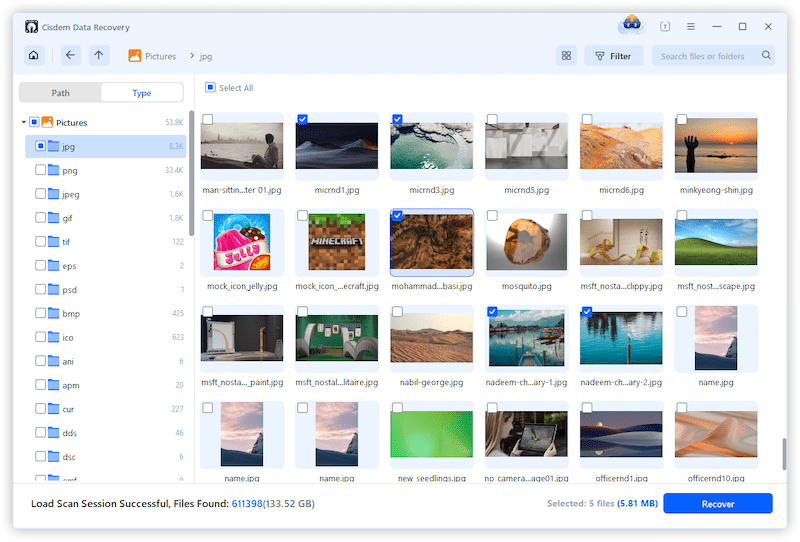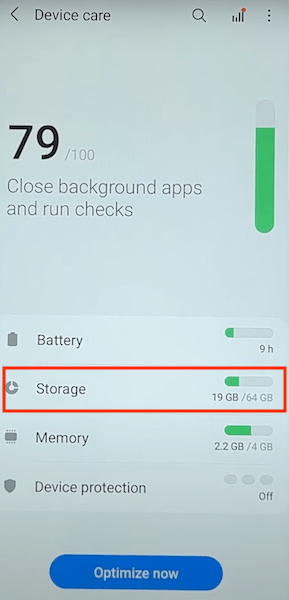How to Format SD Card Without Losing Data on Windows, Mac and Phone
 219
219
 0
0
Key Takeaway: Wonder how to format an SD card without losing data? Land on this page to learn steps to backup data before SD card formatting, and format the card on Windows in File Explorer, Disk Management and CMD, on Mac using Disk Utility and Terminal, or on Android phone with its system function.
Because of its small physical dimensions, SD memory card has become widely used as storage space in many portable devices, such as digital cameras, mobile phones, camcorders, video game consoles, etc. There’s always a necessity for us to format an SD card for a variety of reasons.
Then here arise some common questions: Does formatting an SD card delete everything? Can you format an SD card without losing data? This article will tell the answers.
Does formatting an SD card delete everything?
Most SD card users might believe that the answer is Yes. Actually formatting doesn't exactly equal to “erasing”. It would be more accurate to say that this will depend on which type of formatting we choose: quick format or full format.
To make it readily understood, a quick format empties the existing files and marks your SD card as available for new data, but the emptied files still remain on the card being invisible, recoverable via using a standard data recovery program. While a full format (also called complete/secure format) erases and overwrites all existing files with zeros, in which case data recovery is no longer possible.
That being said, your specific needs will determine whether to utilize quick format or full format. The quick format is more suitable to deal with how to format corrupted SD card without losing data. If you want a deep clean and purge the data completely off your SD card, apply a full format.
What to do before formatting an SD card?
SD card formatting covers 2 different scenarios: a working SD card or a corrupted SD card.
The reason why we need to format an SD card working fine could be, changing its file system to ensure compatibility when switching devices that use the card, or just improving the card performance. As for an SD card being damaged or RAW, it should be formatted to fix any errors.
Whichever quick format or full format we take, the key point to format an SD card without losing data is, backup before formatting.
For an SD card that works normally, it’s a quite direct backup way to manually copy SD card files and paste them onto other devices. But this process may miss some hidden files, and we still lose data to some extent. For a malfunctioned SD card, we can’t access it, let alone to back up the files stored in it.
Therefore, the safest option to do backup before formatting an SD card (corrupted or not) is opting for data recovery software. Here we will recommend Cisdem Data Recovery for Windows or Mac, to restore all data from your SD card.
Cisdem is a dedicated SD card recovery tool, versatile enough to salvage data from inaccessible, RAW, corrupted, or unreadable SD cards. Better yet, it can easily restore more than 1000 types of file: document, photo, video, audio, archived file, email and more. In addition to SD card, Cisdem Data Recovery also makes perfect recovery performance on other storage media, like PC/Mac, laptop, USB drive, hard drive, digital camera, etc. Even though you lose data after formatting, Cisdem is still capable of restoring files from a formatted SD memory card.
How to safely back up files before formatting an SD card?
- Connect your SD card to the computer via a card reader.
- Download, install and open Cisdem Data Recovery on your computer.
 Free Download Windows 11/10/8/7
Free Download Windows 11/10/8/7  Free Download macOS 10.9 or later
Free Download macOS 10.9 or later - Choose SD Card mode from Advanced Recovery, select the SD card to be formatted later, and click Search for Lost Data to start scanning.
![back up sd card with cisdem 01]()
- Wait for the scanning to be done. Locate the SD card files you wish to recover. Use filter tool or search bar if necessary.
![back up sd card with cisdem 02]()
- You’re allowed to double click on these files for preview. Finally select them and click Recover to restore the SD card files to a safe location and finish the backup. If you need to rescue all files from the SD card, tick “Select All” box before recovery.
![back up sd card with cisdem 03]()
Since the SD card files have been backed up properly so far, you’re free to format the SD card without data loss.
How to format SD card without losing data on Windows/Mac?
On Windows or Mac computer, to format SD card without losing data, except for utilizing some paid SD card formatters or partition managers, it’s also a good try to use built-in system tools. 5 formatting ways will be explored in this part, three for Windows and two for Mac. Pick out the exact one as you prefer. Remember to connect the SD card with your computer beforehand.
On Windows:
1# In File Explorer
- Navigate to This PC on your desktop.
- Find the SD card in Devices and drives.
- Right-click on it > choose Format.
![format sd card in file explorer 01]()
- Select an appropriate file system > click Start button for formatting.
![format sd card in file explorer 02]()
#2 Using Disk Management
- Press Windows+X > select Disk Management from the pop-up menu.
![format sd card using disk management 01]()
- Locate your SD card in the volume list > right-click on it > select Format.
![format sd card using disk management 02]()
- Input a volume label as you like > choose a proper file system > click OK.
![format sd card using disk management 03]()
- Click OK again to start to format your SD card without losing data.
![format sd card using disk management 04]()
3# With CMD
- Type CMD in the search bar > select “Run as administrator” to launch Command Prompt.
![format sd card with cmd 01]()
- Type diskpart > press Enter to go into Diskpart Utility.
- Type list disk > hit Enter to list all storage devices connected to your PC. Find out the drive letter of your SD card.
- Continue to type select disk # > press Enter. # represents the drive letter of your SD card, here mine is disk 1.
- Type clean > press Enter to wipe all data from the SD card.
- Now your SD card is inaccessible. Type create partition primary > press Enter to create a partition available.
- Type format fs=fat32 > hit Enter to format the memory card. “fat32” represents the file system you desire, which can be replaced with ntfs, exfat, etc.
- After formatting, type assign and press Enter to give the formatted SD card a drive letter.
![format sd card with cmd 02]()
On Mac:
1# In Disk Utility
- Head over to Finder > Applications > Utilities > Disk Utility.
![]()
- Choose your SD card from the left list > click Erase tab.
- Give your SD card a name > select a format > click Erase button to begin the formatting.
![]()
2# With Terminal
- Search for Terminal in Mac Spotlight > open it.
![format sd card with terminal 01]()
- Type in diskutil list > hit Enter to list out all storage media connected to your Mac. Find the identifier of your SD card on Mac, here mine is disk1s1.
- Type in diskutil reformat disk1s1 > press Enter to format your SD card without data loss. Replace “disk1s1” with the identifier in your own case.
![format sd card with terminal 02]()
When SD card formatting finishes, transfer the backup files (previously created by Cisdem Data Recovery) back into the card. This is the end of how to format SD card without losing data on Windows or Mac.
Bonus: How to format SD card without losing data on phone?
In case you wouldn’t like to take your SD card out from mobile devices, there’s also an approach to directly format it within your Android. This extended part will elaborate how to format SD card without losing data on Android phone. Likewise, the most important step is to do files backup in the first place. So try to use the backup feature embedded on your phone or manually back up the needed SD card files before formatting. Then follow up the tutorial below to carry out the formatting on Android:
- Go to Settings > Battery and device care.
![format sd card on android 01]()
- Choose Storage.
![format sd card on android 02]()
- Select SD card storage > hit on the three-dots icon at the top right corner > choose Advanced.
![format sd card on android 03]()
- Tap on SD card > Format > Format SD card to start formatting.
![format sd card on android 04]()
At last, don’t forget to transfer the backed up data back to your formatted SD card.

Zoey shows a great interest in what she does. Although not long with Cisdem, she has possessed a professional understanding of data recovery.

JK Tam is the lead developer at Cisdem, bringing over two decades of hands-on experience in cross-platform software development to the editorial team. He is now the lead technical approver for all articles related to Data Recovery and DVD Burner.






















